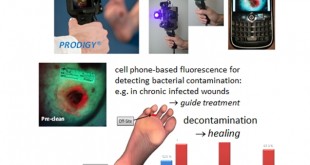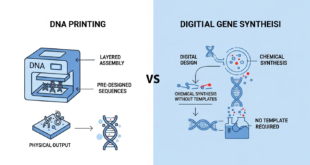Related Articles
Introduction:
Photonic integrated circuits (PICs) have long been heralded as the next frontier in computing and communication technology. However, their production has been hindered by the complexity and cost of traditional fabrication methods. Now, a groundbreaking discovery from the University of Washington is poised to change the game. Led by Professor Mo Li, researchers have developed a method to fabricate PICs using a simple laser writer, democratizing access to this transformative technology.
In the ever-evolving landscape of technology, the emergence of photonic integrated circuits (PICs) heralds a new era of innovation. These advanced microchips harness the power of light, offering the potential to revolutionize electronic devices across diverse sectors. From automotive technology to healthcare, communication networks to artificial intelligence, the applications of PICs are vast and promising. In this article, we explore the significance of PICs and the challenges they present in fabrication.
Understanding Photonic Integrated Circuits:
Photonic integrated circuits leverage photons, the fundamental particles of light, to manipulate, store, and access information. Analogous to traditional electronic circuits that use electrons, PICs offer enhanced speed, efficiency, and functionality. Already deployed in fiber-optic communication systems, PICs are poised to transform various technologies, including LiDAR for autonomous vehicles, medical sensors, 5G/6G networks, and optical and quantum computing.
The Promise of Photonic Integration:
The integration of photonics into electronic devices holds immense promise for cost reduction and performance enhancement. By harnessing the unique properties of light, PICs enable faster data transmission, higher bandwidth, and improved energy efficiency. Moreover, their versatility allows for the development of compact and multifunctional devices with applications across diverse industries.
What is a Nanofabrication Facility?
At its core, a nanofabrication facility is a specialized laboratory equipped with state-of-the-art tools and instruments capable of manipulating matter at the nanoscale. This involves the precise fabrication of structures, devices, and materials with dimensions ranging from one to several hundred nanometers. To put this into perspective, a nanometer is one-billionth of a meter, roughly the size of a few atoms arranged in a row.
How Nanofabrication Works:
Nanofabrication processes utilize a variety of techniques to create nanostructures with unprecedented precision. These techniques include:
- Lithography: Lithography involves using light or electron beams to create patterns on a substrate, enabling the precise etching or deposition of materials at the nanoscale.
- Deposition: Deposition methods such as chemical vapor deposition (CVD) and physical vapor deposition (PVD) allow for the controlled deposition of thin films or layers of materials onto a substrate.
- Etching: Etching processes, including wet etching and plasma etching, selectively remove material from a substrate to create intricate patterns or structures.
- Self-Assembly: Self-assembly techniques leverage the inherent properties of certain materials to spontaneously form organized structures at the nanoscale, often guided by molecular interactions.
Challenges in Nanofabrication:
Despite their potential, the fabrication of PICs presents significant challenges. Nanofabrication facilities, essential for producing these microchips, require substantial investment and are often inaccessible to smaller institutions and research labs. Additionally, the lithographic process used in fabrication is meticulous and time-consuming, requiring precise execution and cleanroom conditions. Furthermore, errors in design or functionality can result in wastage of time and resources, leading to delays in research and development efforts.
From Expensive Labs to Desktop Solutions:
The conventional production of PICs requires access to million-dollar nanofabrication facilities, limiting research, education, and adoption. However, the new method pioneered by Professor Li’s team leverages a thin film of phase-change material and a standard laser writer, similar to those used for burning CDs and DVDs. This innovation drastically reduces the barriers to entry, allowing for the rapid creation and reconfiguration of circuits in a fraction of the time previously required.
Addressing the Fabrication Dilemma:
To overcome the barriers to PIC fabrication, efforts are underway to democratize access to nanofabrication facilities. Collaborative initiatives and shared-use facilities aim to provide researchers and institutions with affordable access to cutting-edge equipment. Furthermore, advancements in fabrication techniques, such as additive manufacturing and maskless lithography, hold the promise of streamlining the production process and reducing costs.
Advantages Abound: The advent of laser-written PICs brings numerous benefits to the table:
Educational Empowerment: Students can now gain hands-on experience with photonic circuits in labs or classrooms, fostering future innovation and discovery in the field. Accelerated Research Cycles: Researchers can expedite their development cycles by quickly testing new ideas without relying on costly nanofabrication facilities. Industrial Adaptability: The ability to rewrite and reconfigure circuits opens doors for exciting industrial applications, such as adaptable optical connections in data centers, leading to cost savings and efficiency gains. A Journey Towards Progress: While the method is still in its infancy, Professor Li envisions a future where commercially available desktop laser writers for photonic circuits become commonplace. These affordable printers would democratize access to PIC fabrication, fueling advancements in research and education.
The team is also focused on enhancing circuit performance by minimizing optical loss in the material and refining the laser writing process for greater precision. These advancements will enable the fabrication of even more sophisticated circuits, paving the way for new innovations in photonics.
Looking Ahead:
As we venture into a future driven by innovation, the role of PICs will only continue to expand. From powering next-generation communication networks to enabling breakthroughs in healthcare and computing, PICs are poised to shape the technological landscape in profound ways. By addressing the challenges in fabrication and fostering collaboration, we can unlock the full potential of photonic integration and usher in a new era of progress and discovery.
Professor Li and his team are optimistic about the future. This new technology not only enables the creation of customized PICs but also offers the potential for seamless integration with existing electronic circuitry. The reconfigurable and reusable nature of laser-written PICs opens up a world of possibilities for researchers, students, and industry leaders alike.
The potential impact on the field of photonics is immense, with this breakthrough technology poised to be disseminated to a wider research community. In essence, this laser revolution in PIC fabrication paves the way for a future where photonic integrated circuits are no longer confined to expensive labs but are accessible to all, driving innovation and progress in the digital age.
Conclusion
Photonic integrated circuits represent a transformative technology with vast implications for various industries. By harnessing the power of light, these advanced microchips offer unprecedented speed, efficiency, and functionality. While challenges in fabrication persist, concerted efforts to democratize access and streamline production processes are underway. As we navigate towards a future illuminated by innovation, PICs stand as beacons of possibility, driving progress and shaping the world of tomorrow.
References and Resources also include;
https://phys.org/news/2024-02-team-laser-printer-photonic-chips.html
 International Defense Security & Technology Your trusted Source for News, Research and Analysis
International Defense Security & Technology Your trusted Source for News, Research and Analysis



